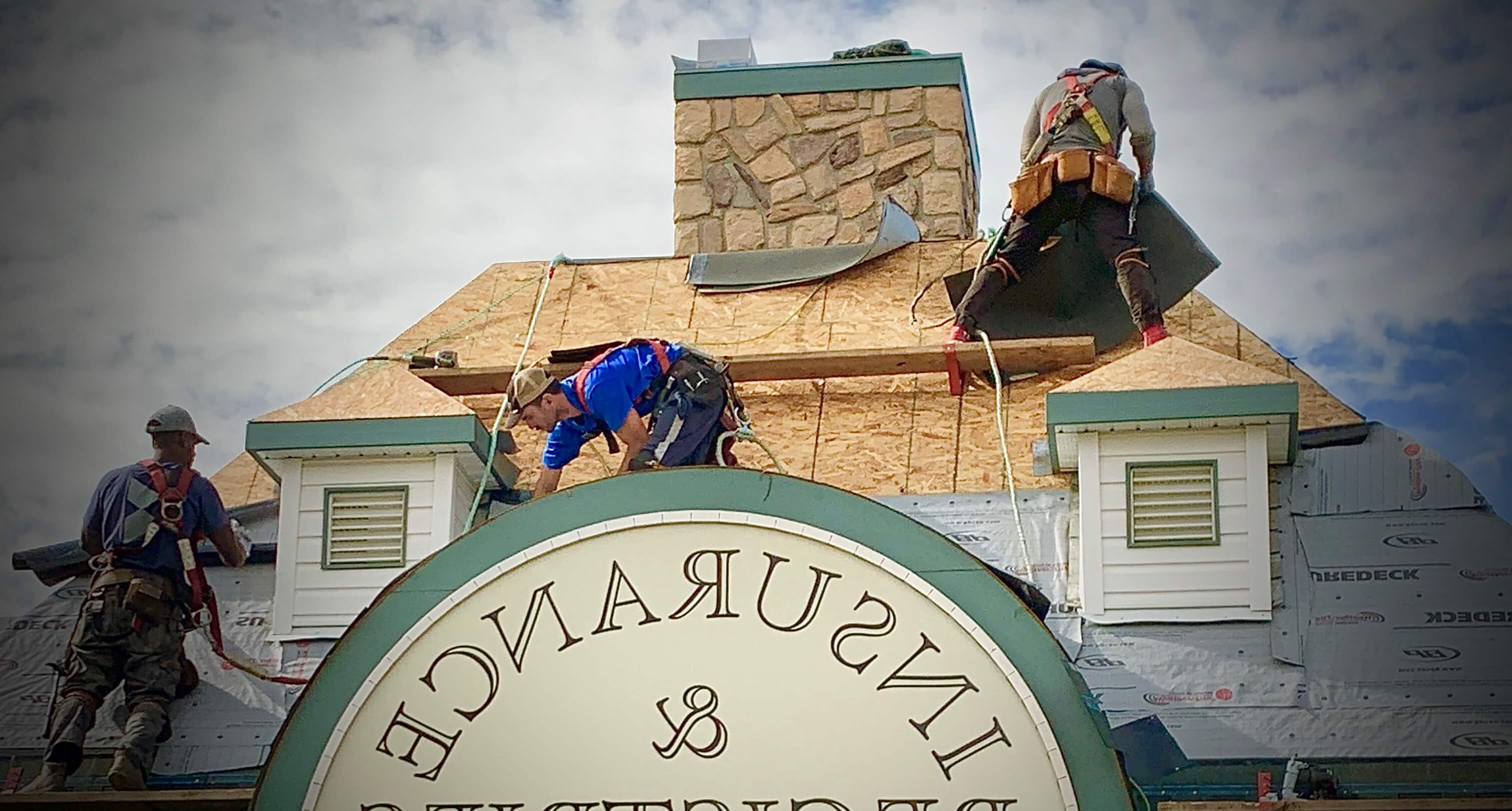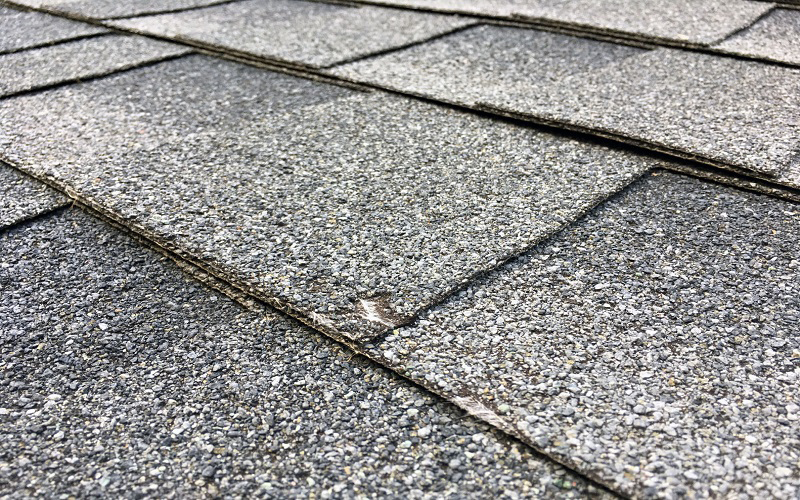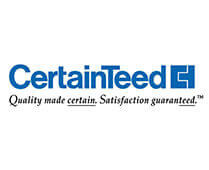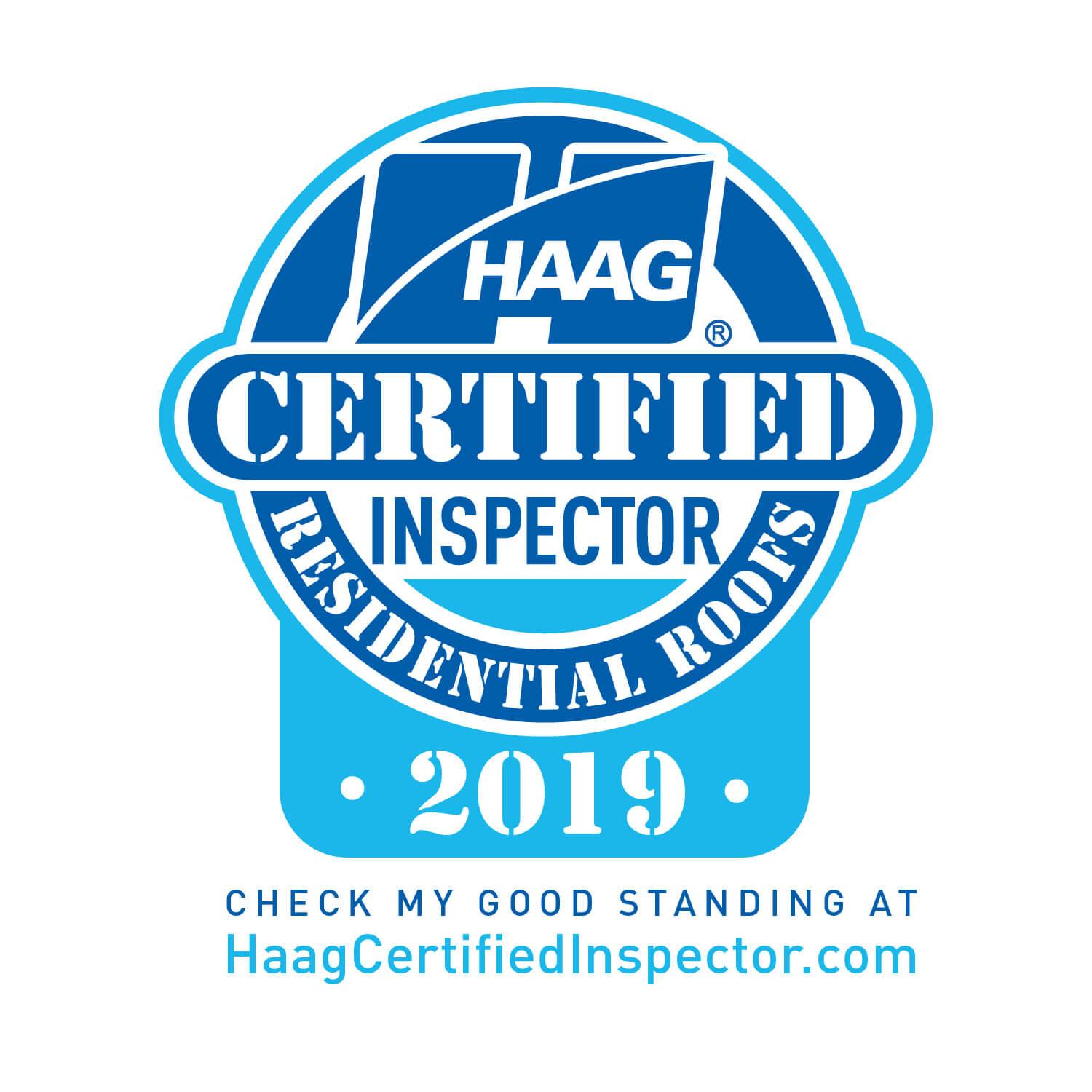
April 19, 2024
Dreaming of a sturdy roof that withstands the test of time? Imagine a seamless roofing installation process that brings peace of mind. Picture this: expert roofers handling everything from start to finish. Are you ready to elevate your home's protection with top-notch roofing installation services? Trust us to deliver quality craftsmanship and durability, ensuring your shelter remains safe and secure. Say goodbye to worries about leaks or damages – our team has got you covered. Ready to experience hassle-free roofing projects that exceed expectations? Let's make your dream roof a reality today.
Key Takeaways
-
Properly prepare your home for roof installation by clearing the area and ensuring easy access for the roofing team.
-
Consider hiring professional roofers for a smoother and more efficient installation process, especially for complex roofing systems.
-
Regularly inspect your roof and look out for signs indicating the need for a new roof to prevent further damage and maintain the structural integrity of your home.
-
Prioritize post-installation essentials such as regular maintenance and timely repairs to prolong the lifespan of your new roof.
-
Save money in the long run by investing in a high-quality roof and professional installation to avoid costly repairs and replacements down the line.
-
When in doubt, consult with roofing experts to address any questions or concerns you may have regarding your roof installation.
Understanding Roof Installation
Key Steps Overview
Roof installation involves several essential stages to ensure a sturdy and durable roof. First, the existing roof is inspected for damage or issues. Next, old materials are removed before preparing the surface for installation. Then, underlayment and flashing are added to enhance waterproofing. Finally, shingles or roofing material are installed following precise measurements.
One of the key actions in installing a new roof is proper ventilation to prevent moisture buildup and extend the roof's lifespan. Ensuring a secure and watertight seal around chimneys, vents, and skylights is crucial. The sequential order of tasks during roofing installation ensures each step complements the next for a successful project completion.
Timing Your Installation
To prevent further damage, it is vital to determine the right time for roof installation. Considering weather conditions like rain or extreme temperatures is crucial to avoid complications during the process. Optimal installation timing involves scheduling the project during dry seasons with moderate temperatures to facilitate smooth progress.
Planning ahead allows homeowners to schedule roofing installation when weather conditions are favorable. By avoiding peak seasons where contractors may be busy, homeowners can secure timely services and attention to detail. Coordinating with professional roofers ensures that installations occur efficiently without unnecessary delays.
Material Choices

When considering roofing materials for installation, homeowners can explore different options such as asphalt shingles, metal roofing, clay tiles, or wood shakes. Each material offers unique features and benefits suited for various climates and aesthetic preferences. Comparing durability, maintenance requirements, and energy efficiency helps in selecting the most suitable material for long-term performance.
Comparing the features and benefits of various roofing materials aids in making an informed decision based on longevity and visual appeal. Asphalt shingles are popular for their cost-effectiveness, while metal roofing provides durability against harsh weather conditions. Clay tiles offer a traditional look with excellent insulation properties, whereas wood shakes add a rustic charm but require more maintenance.
Preparing for Roof Installation
Removing Old Roof
-
Use appropriate tools and techniques to execute the removal of the old roof efficiently.
-
Safely dispose of old roofing materials following environmental regulations during the removal process.
-
Ensure to prepare the roof surface adequately for the installation of a new roofing system.
Deck Inspection

-
Inspect the roof decking for any damage, rot, or moisture that may compromise its structural integrity.
-
Verify the solid foundation of the roof deck before proceeding with the installation process.
-
Address any issues discovered during the deck inspection promptly to maintain a sturdy base.
Flashing Check
-
Evaluate the condition of flashing around critical areas such as chimneys, vents, and skylights.
-
Replace or repair flashing where necessary to prevent water infiltration and leaks.
-
Properly secure flashing to ensure effective waterproofing and long-term protection against elements.
The Installation Process
Drip Edge Setup
Installing drip edge is crucial to direct water away from the roof's edges, preventing structural damage. Proper alignment and attachment are essential for effective water diversion. Positioning the drip edge correctly during installation is key to avoiding water-related issues.
Underlayment Application

Applying underlayment adds an extra layer of protection against water infiltration, enhancing the roof's durability. Securely fastening the underlayment to the roof deck ensures a watertight barrier, safeguarding the structure from leaks. Choosing the right type of underlayment based on the roofing material being used is vital for optimal performance.
-
Pros:
-
Enhances waterproofing capabilities.
-
Protects against moisture intrusion.
-
-
Cons:
-
Adds to the overall cost of roofing installation.
-
Requires careful selection to match specific roofing materials.
-
New Material Installation

Following the manufacturer's guidelines and industry best practices is essential when installing new roofing material. Proper alignment and secure fastening of shingles or panels during installation ensure a sturdy and durable roof structure. Maintaining consistency and quality throughout the installation process is critical for long-lasting results.
-
Steps for New Material Installation:
-
Prepare the roof surface by cleaning and inspecting it thoroughly.
-
Begin laying out the new roofing material according to the manufacturer's instructions.
-
Secure each piece in place with appropriate fasteners to prevent displacement.
-
-
Points to Remember:
-
Regularly check alignment and spacing while installing new material.
-
Ensure all components are securely attached to withstand weather elements.
-
Post-Installation Essentials
Debris Cleanup
Clear and remove debris generated during the roofing installation process. Dispose of old materials and waste responsibly, maintaining a clean worksite. Thorough cleanup is crucial for safety and aesthetics post-installation.
Completing debris cleanup after roofing installation not only enhances the visual appeal but also prevents potential safety hazards. By removing leftover materials, nails, and other debris, the risk of accidents is significantly reduced. Responsible disposal practices contribute to environmental sustainability.
-
Proper debris cleanup ensures a safe environment for both workers and residents.
-
A clean worksite reflects professionalism and attention to detail in the installation process.
Final Inspection

Conduct a comprehensive final inspection to verify the quality of the roofing installation. Address any issues or concerns identified during the inspection promptly. It is essential to ensure that the new roof meets industry standards and customer expectations.
The final inspection serves as a critical quality control step in the roofing project. By meticulously examining every aspect of the installation, any deficiencies can be identified and rectified promptly. This thorough evaluation guarantees that the roof is structurally sound and aesthetically pleasing.
-
A final inspection provides assurance that all aspects of the installation meet required standards.
-
Addressing any issues found during inspection promptly prevents future problems or damage.
DIY vs Professional Installation
DIY Considerations
Installing a roof by yourself may seem cost-effective, but the challenges can be daunting. Risks such as improper installation leading to leaks or structural damage are common. The lack of experience can result in safety hazards and subpar workmanship.
Understanding the complexities involved in roofing installation is crucial for DIY enthusiasts. From selecting the right materials to ensuring proper sealing and insulation, every step requires precision. Without professional guidance, mistakes can be costly and compromise the integrity of the roof.
To ensure a safe and durable roof, consider hiring a professional roofer. Professionals have the expertise to handle various roofing materials and styles efficiently. Their experience minimizes errors, guarantees proper installation, and provides long-term reliability for your roof.
Hiring Professionals

Researching reputable roofing contractors is essential before making a decision. Look for companies with positive reviews, relevant experience in installing roofs similar to yours, and proper licensing and insurance. This ensures quality workmanship and adherence to industry standards.
Obtaining multiple quotes from different contractors allows you to compare services, pricing, and timelines. This helps in making an informed decision based on your budget and project requirements. Remember that the cheapest option may not always guarantee the best results.
Scheduling a consultation with the selected contractor is crucial to discuss project details thoroughly. This includes material choices, estimated costs, project duration, and any specific concerns you may have. Clear communication during this stage sets expectations for both parties and ensures a smooth installation process.
Recognizing the Need for a New Roof
Warning Signs

Spotting warning signs that signal the necessity of a new roof is crucial. Look out for leaks, which can lead to water damage and mold growth. Address missing shingles promptly to prevent further issues.
Visible damage like cracks or sagging areas should not be ignored. Taking immediate action can prevent more extensive problems down the line. By being proactive, you can safeguard your property and belongings.
Benefits of a New Roof
Investing in a new roof offers numerous benefits. One advantage is the improvement in energy efficiency. A new roof can help regulate indoor temperatures, reducing energy costs in the long run.
Enhancing your home's curb appeal is another perk of a new roof. It can give your property a fresh and attractive look, increasing its overall value. A new roof provides better protection against weather elements, ensuring durability and longevity.
Saving Money with Your New Roof
Long-Term Savings
Investing in a new roof can lead to significant long-term cost savings. By opting for a quality installation, you can avoid frequent repairs and potential damage that may arise from an old or faulty roof. Over time, the initial investment in a new roof pays off through reduced maintenance costs and increased durability.
To ensure long-term financial benefits, it is crucial to calculate the overall savings that come with a durable and well-installed roof. By avoiding constant repairs and addressing any issues promptly, you can maintain the integrity of your roof for years to come. This proactive approach not only saves money but also enhances the value of your property.
Recommended Practices
Following recommended practices is essential for a successful roofing installation. By adhering to industry standards and best practices, you can guarantee quality workmanship that stands the test of time. Professionals recommend implementing these guidelines to ensure the longevity and effectiveness of your new roof.
Consulting with experts during the installation process is key to implementing recommended practices effectively. Their knowledge and experience can help you make informed decisions about materials, design, and maintenance strategies. By partnering with professionals, you can rest assured that your new roof meets all necessary standards for optimal performance.
Frequently Asked Questions
Installation Duration
Estimate the time needed for a roofing installation, typically ranging from a few days to a few weeks. The size and complexity of the roof significantly impact the installation timeline. Coordinate with your roofing contractor to set a realistic schedule for the project completion.
Consider factors like weather conditions and the availability of materials when planning the installation timeline. Mild seasons are ideal for roofing projects to avoid delays due to extreme weather conditions. Secure a slot during periods with stable weather patterns to ensure smooth progress.
Best Installation Season
Plan your roofing installation during seasons with mild temperatures and minimal precipitation. Optimal weather conditions reduce the risk of delays and complications during the installation process. Scheduling your project ahead of time ensures that you can book a slot during the preferred season.
Common Materials
Explore various roofing materials such as asphalt shingles, metal, tile, and wood commonly used in residential installations. Each material has unique characteristics and benefits, including durability, cost-effectiveness, and aesthetic appeal. Choose a roofing material that aligns with your priorities and budget while enhancing the overall look of your home.
-
Pros: Durable, cost-effective, aesthetically pleasing.
-
Cons: May vary based on material type; some materials require more maintenance than others.
Presence During Installation
Stay engaged throughout the roofing installation process to address any concerns promptly. Effective communication with the roofing team ensures that everyone is clear on project requirements and expectations. Monitor the progress regularly and provide feedback or approvals as necessary to maintain project efficiency.
-
Be available for any questions or clarifications.
-
Ensure all parties are aligned on project details.
-
Supervise work progress for quality control purposes.
Summary
You've learned the ins and outs of roofing installation, from preparation to post-installation care. Whether you opt for a DIY approach or hire professionals, ensuring a sturdy roof over your head is crucial for your home's longevity and your family's safety. By recognizing the signs that indicate the need for a new roof and making informed decisions throughout the process, you can save money in the long run while safeguarding your property.
Now that you're equipped with this knowledge, take proactive steps to assess your roof's condition and act accordingly. Don't overlook the importance of regular maintenance and timely repairs to extend the lifespan of your roof. Your diligence today will pay off tomorrow in terms of both savings and peace of mind.
Frequently Asked Questions
Can I Install a New Roof Over the Old One?
Yes, in some cases. However, it's generally not recommended as it can void warranties, add unnecessary weight, and hide underlying issues. Consult with a professional to determine if it's suitable for your specific situation.
How Long Does Roof Installation Take?
The duration of roof installation varies based on factors like size, complexity, weather conditions, and materials used. On average, a typical roof installation can take anywhere from a few days to two weeks to complete.
What Factors Affect the Cost of Roof Installation?
Several factors influence the cost of roof installation including materials chosen, roof size and pitch, location, labor costs, permits, and additional features like skylights or chimneys. Get multiple quotes from reputable contractors to compare prices and services.
Do I Need to Be Present During Roof Installation?
While it's not necessary for you to be present during the entire installation process, being available at the start and end is recommended. This allows you to discuss any concerns with the crew before they begin work and inspect the completed installation thoroughly.
How Can I Maintain My New Roof After Installation?
Regular maintenance is key to prolonging the lifespan of your new roof. Conduct annual inspections, clear debris regularly, address any issues promptly, ensure proper ventilation in your attic, and consider professional maintenance services to keep your roof in top condition.
Not what you were looking for? Safe Roofing also offers the following services:
Roof Replacement
Roof Repair
Roof Ventilation
Solar Panel installation
Gutter Installation
Safe Roofing’s Certifications and Qualifications
Manufacturer Certification: IKO (preferred installer)
Building Products of Canada Corp.
GAF Certified Roofer
CertainTeed
Euroshield Certified





